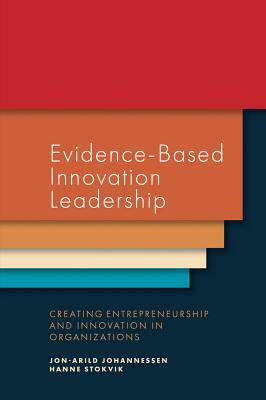
Je cadeautjes zeker op tijd in huis hebben voor de feestdagen? Kom langs in onze winkels en vind het perfecte geschenk!
- Afhalen na 1 uur in een winkel met voorraad
- Gratis thuislevering in België vanaf € 30
- Ruim aanbod met 7 miljoen producten
Je cadeautjes zeker op tijd in huis hebben voor de feestdagen? Kom langs in onze winkels en vind het perfecte geschenk!
- Afhalen na 1 uur in een winkel met voorraad
- Gratis thuislevering in België vanaf € 30
- Ruim aanbod met 7 miljoen producten
Zoeken
Evidence-Based Innovation Leadership
Creating Entrepreneurship and Innovation in Organizations
Jon-Arild Johannessen, Hanne Stokvik
Hardcover | Engels
€ 178,95
+ 357 punten
Omschrijving
Creativity in organizations is traditionally considered to be the domain of design, marketing, and research and development. In practical terms, this means that innovation and its implementation tend to become the sole responsibility of a few people rather than becoming part of the everyday pulse of life that runs throughout an organization. As we transition from an industrial society to a global knowledge and innovation economy, we need new breed of leaders and a new understanding of leadership.
Jon-Arild Johannessen and Hanne Stokvik delve into the necessary conditions for this new type of leadership, which they call "innovation leadership," and develop a holistic model that includes entrepreneurial action, innovative leadership, creative energy fields within organizations, high-tech wealth creation, and innovation as a business process. Their step-by-step explanations include 50 reader reflection tasks, case letters, and business cases. All of these are predicated upon the principles process-pedagogy, a mode of teaching and learning that encourages readers to collaborate with their peers in order to develop their innovative thinking and communication skills. What this means is that readers of this book not only come to understand innovation leadership but train to become innovation leaders, themselves.
For its cutting-edge ideas, its clearly structured chapters, and its proactive approach to encouraging readers to implement their learning, Evidence-Based Innovation Leadership is essential reading for researchers, students, practitioners, and anyone else eager to become a better innovation leader in today's knowledge economy.
Jon-Arild Johannessen and Hanne Stokvik delve into the necessary conditions for this new type of leadership, which they call "innovation leadership," and develop a holistic model that includes entrepreneurial action, innovative leadership, creative energy fields within organizations, high-tech wealth creation, and innovation as a business process. Their step-by-step explanations include 50 reader reflection tasks, case letters, and business cases. All of these are predicated upon the principles process-pedagogy, a mode of teaching and learning that encourages readers to collaborate with their peers in order to develop their innovative thinking and communication skills. What this means is that readers of this book not only come to understand innovation leadership but train to become innovation leaders, themselves.
For its cutting-edge ideas, its clearly structured chapters, and its proactive approach to encouraging readers to implement their learning, Evidence-Based Innovation Leadership is essential reading for researchers, students, practitioners, and anyone else eager to become a better innovation leader in today's knowledge economy.
Specificaties
Betrokkenen
- Auteur(s):
- Uitgeverij:
Inhoud
- Aantal bladzijden:
- 216
- Taal:
- Engels
Eigenschappen
- Productcode (EAN):
- 9781787696365
- Verschijningsdatum:
- 30/11/2018
- Uitvoering:
- Hardcover
- Formaat:
- Genaaid
- Afmetingen:
- 157 mm x 231 mm
- Gewicht:
- 430 g

Alleen bij Standaard Boekhandel
+ 357 punten op je klantenkaart van Standaard Boekhandel
Beoordelingen
We publiceren alleen reviews die voldoen aan de voorwaarden voor reviews. Bekijk onze voorwaarden voor reviews.









